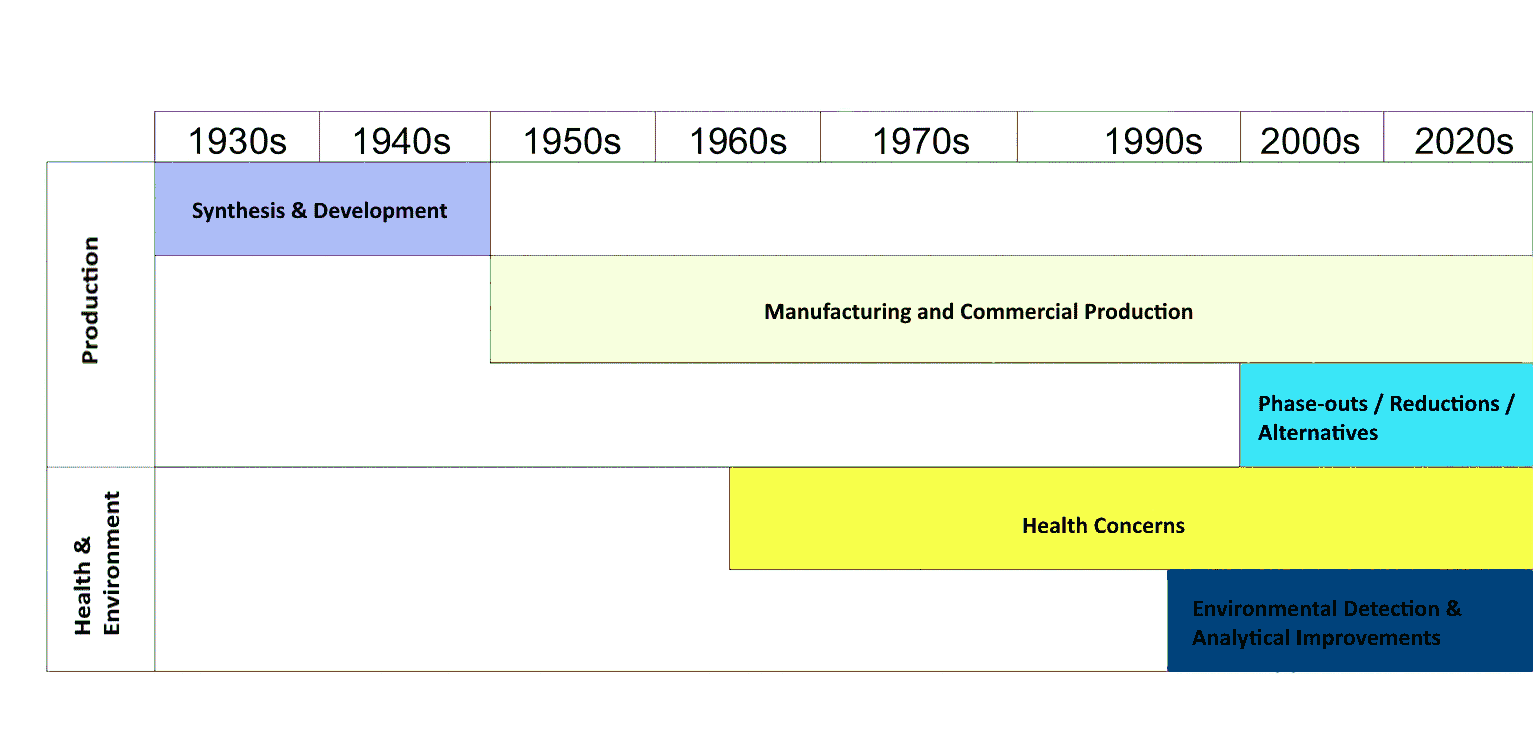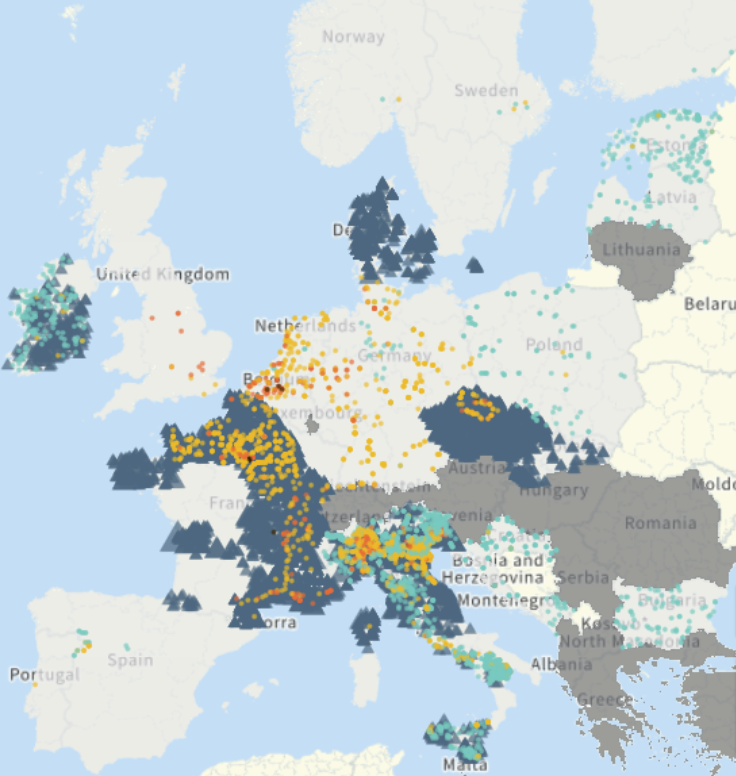The origins and risks associated with PFAS
Have you ever wondered what’s really in your glass of tap water? Beyond the usual minerals, scientists have found traces of substances called PFAS, which are often nicknamed “forever chemicals.” They’ve been used for decades in our daily lives. It also looks like there is no industry where items, which contain PFAS, are used. We can’t imagine our routine without cosmetic, waterproof jackets, travel and work equipment, and food packaging. However, the range is endless.
The main problem is that they don’t break down easily and travel into water supplies. For example, when you wash your waterproof clothes, tiny particles separate and without obstacles fall into the drain system. Or when you wash your non-stick pans. Industry level we even don’t take into account. Of course, they may use modern filters but there is no filter that can catch all PFAS substances. Moreover, PFAS as vapour or as attached to small particles travel far away with wind and clouds, depositing through precipitations. That’s why PFAS is found in any remote place.
From accidental discovery to everyday use
Where is the point of no return begun? How did this unbreakable and forever existing chemical was born and became so popular?
The history of per- and polyfluoroalkyl substances (PFAS) begins in 1938 with a surprising accident. Roy Plunkett, a young chemist at DuPont, discovered a strange white powder while experimenting with gases. This powder turned out to be polytetrafluoroethylene (PTFE), later branded as Teflon. At first, it seemed like a chemical curiosity - inert and slippery, but without an obvious use.
That changed during World War II. When scientists needed a material tough enough to contain the dangerous uranium compounds of the Manhattan Project, PTFE became invaluable. This urgent demand pushed DuPont to refine production methods, and Teflon’s reputation as a “wonder plastic” began to grow.
PFAS Emergence timeline

General timeline of PFAS emergence and awareness*.
*This graphic provides general indication of PFAS emergence and awareness by decade.
By the 1950s, PTFE moved from military projects to everyday life. French engineer Marc Grégoire, encouraged by his wife Colette, pioneered the idea of non-stick cookware. Their company, Tefal, launched pans that made cooking and cleaning dramatically easier. Soon after, American manufacturers embraced the trend, and Teflon-coated pans became a household staple.
Meanwhile, companies as 3M introduced other PFAS, including PFOA and PFOS, which acted as surfactants and stain repellents. These new substances opened the door to an even wider range of applications. Waterproof jackets, stain-resistant carpets, firefighting foams, cosmetics, and even food packaging benefited from PFAS’s unique durability and resistance to oil, water, and heat.
The innovation didn’t stop there. In 1969, Robert Gore discovered a way to stretch PTFE, creating Gore-Tex, a breathable yet waterproof fabric. From space suits to outdoor jackets, PFAS-based materials seemed unstoppable. Their image as safe, modern, and problem-solving chemicals helped them spread across industries and continents.
For decades, the unique qualities of PFAS made them a symbol of postwar innovation and consumer convenience. Yet their greatest strength, their resistance to breakdown, has also become their greatest weakness.
How does PFAS influence our health?
We consume PFAS every day. They are in cosmetics, clothing, and cooking pans, but the biggest exposure usually comes through water and food. If you never check your tap water or ignore where your food and its packaging come from, it may cost you your health problems in the future. As so-called forever chemicals, PFAS accumulate in your body with ease.
What does that mean for health? Researchers link long-term exposure to higher risks of some types of cancer, for example, kidney and testicular cancer. They also associate it with thyroid disorders, cholesterol imbalance, immune suppression, and liver damage.
For children and pregnant women, the stakes are even higher. Early exposure affects health for years to come. And these are not abstract risks. Studies show that nearly everyone already carries PFAS in their blood. In communities with polluted water, the levels rise even more. Fortunately, RIVM keeps researches and check
Though PFOA and PFOS are no longer allowed in production or sales in the EU and USA, their use hasn’t disappeared completely. Even with the most researched and dangerous PFAS, some industries still struggle to stop relying on them. Still, these restrictions mark a positive step toward reducing these chemicals for good.
You might wonder that if PFOA and PFOS are almost phased out, are we safer now? Not necessarily. Industry often replaces them with GenX (HFPO-DA) and PFBS. These chemicals are newer, but not well understood. We simply don’t know yet if they are safer or just another version of the same problem.
So, PFOA remains the benchmark. Its mass production began earlier than all modern PFAS substances. Hence, it’s studied more than any other PFAS, it offers the most complete picture of harm. Evidence shows that PFOA damages the liver, disrupts hormones, and raises cancer risk. That’s why RIVM uses PFOA as the reference point. By expressing other PFAS in “PFOA equivalents,” it’s easier for scientists to calculate the combined threat and take relevant actions.
From rivers to the tap: how Europe fights PFAS in drinking water
In Europe, action against PFAS started small but is now expanding rapidly. Early rules under the Water Framework Directive focused only on single substances like PFOS and PFOA. Member States had to check rivers and lakes, then report when levels exceeded the standards.
Today, the focus has shifted closer to home - right to the tap. With the Drinking Water Directive (2020/2184/EU), the EU introduced stricter requirements. Every Member State must now monitor PFAS in drink water, both by testing for individual chemicals and by checking the total amount of PFAS present.
Building on this, the European Commission and its Joint Research Centre are calling for even tighter rules. They want more PFAS compounds included, more complete data collection, and lower thresholds.
Where PFAS pollution hits hardest
To understand the scale of the problem, 27 European countries shared monitoring data with the European Environment Agency (EEA) between 2010 and 2022. Most of the studies zoomed in on PFOS in rivers and lakes. The results were alarming: thousands of polluted sites, with about 2,300 marked as hotspots. Meanwhile, there’s still a lack of information about soils, sediments, and wildlife.
Map for PFOS data in European surface and groundwater (2018-2022)

Source: European environmental agency
Looking closer at the numbers, the picture becomes clear. Between 2018 and 2022, nearly half to all coastal water sites exceeded the safety standards. Rivers followed the same trend, with 50–60% above the limit every year. Even lakes, once considered safer, are showing a rise from just 11% exceedances in 2018 to 35% in 2022.
Country reports show strong contrasts. Belgium, France, Iceland, and the Netherlands detected exceedances almost everywhere in 2022. Germany reported 83% of sites above the limit, while Italy had 54%. On the other hand, Spain, Ireland, Poland, Croatia, and Estonia stayed below 20%, and a few countries reported no exceedances at all.
Despite these insights, uncertainty remains. Different countries use different monitoring methods, so the full scale is still hard to measure. What is clear, though, is that PFAS in drink water is not a local issue. It is a widespread European challenge that requires solutions.
Reduce PFAS in your drinking water
Cleaner water, fewer PFAS, better health
No filter removes 100% of PFAS from drinking water. At least, for now. What you can do, however, is reduce the amount of the most harmful and well-studied PFAS you take in through your daily drinking water.
Some people worry about PFAS absorption through the skin while showering or washing dishes. In reality, only a tiny amount enters your body this way. Unless you live completely off-grid near chemical factories in places as Dordrecht or the Westerschelde, or in regions of Europe with heavily contaminated groundwater (some places in France, Belgium, or Denmark), it’s not something to lose sleep over.
Drinking water, however, is a different story. The average person drinks at least 1.5 liters of water per day - and more when you count coffee, tea, and food prepared with water. If you filter your drinking water, you can slow down the buildup of PFAS in your body and lower your long-term health risks.

Total of the 20 PFAS tested*. According to the Drinking Water Ordinance (as of March 2023), a limit of 0.1 µg/l for this total value will take effect on January 12, 2026.
*PFUnA (PFUnDA) ,PFPA (PFPeA), PFBA, PFPS (PFPeS), PFHxA, PFOA, PFHpS, PFDA, PFHxS, PFBS, PFUnS (PFUnDS), PFTrDS, PFDoS (PFDoDS), PFTrDA, PFHpA, PFDS, PFNS, PFOS, PFNA, PFDoA (PFDoDA).
We sent water samples (both filtered and unfiltered) to the German laboratory CheckNatura. They tested for 20 of the most closely monitored PFAS compounds. The results showed values well below the strict limits in the updated EU Drinking Water Directive (2023):
- 0.1 µg/L for the ‘Sum of PFAS’ (20 compounds)
- 0.5 µg/L for ‘PFAS Total’ (all PFAS combined)
EU member states must fully implement these standards by January 2026.
For our testing, we took water samples straight from the river. Surprisingly, even unfiltered water already met the future 2026 limits. Still, filtered water contained far less PFAS, giving you additional protection and reducing the risk of long-term accumulation in your body.
When you filter your drinking water, you reduce PFAS and at the same time remove other unwanted contaminants. Our activated carbon filters with ultra membranes filter lead, chlorine, chemicals, bacteria, and even nanoplastics. At the same time, they keep the minerals your body needs. That’s important, because fully demineralized water often requires extra mineralization or supplements.

Questions? We are happy to help you.
Email: info@innologic.nl
Website: www.innologic.nl
Tel: +31 85 788 63 28
Available by telephone from Monday to Friday from 10:00 to 16:00.
Workshop Harderwijk
Address: Nobelstraat 31 7, 3846 CE Harderwijk, The Netherlands
Workshop Heerde
Address: Zwarteweg 10 A, 8181 PD Heerde, The Netherlands
VAT identification number: NL808812622B01
Chamber of Commerce number: 05065655
Bank Number: IBAN NL40 RABO 0370283546
BIC/SWIFT: RABONL2U








